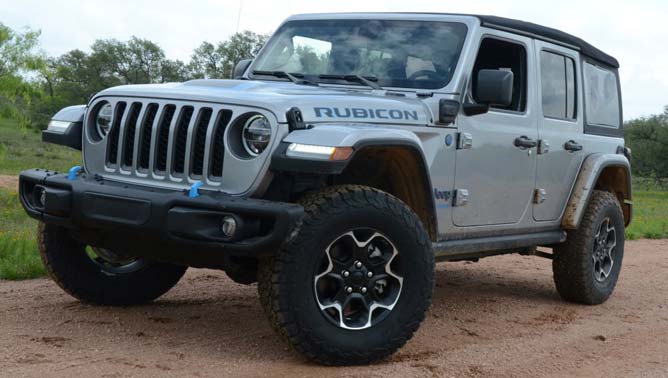The Jeep Wrangler Rubicon 4xe is the first of the legendary off-roaders to couple trail rated capabilities with all-electric driving. It is powered by a turbocharged 2.0-liter 4-cylinder engine and a dual-motor electric drive system, leading to a total system output of 375 horsepower and 470 lb-ft of torque. That output allows the four-wheel-drive Wrangler with the 8-speed automatic transmission to sprint from a stop to 60 miles per hour in just 6 seconds flat, making it the quickest Wrangler next to the new 392 V8 models.
More importantly, the Wrangler Rubicon 4xe allows all-electric driving on- and off-road, coupling emission-free power with the brand’s legendary capabilities. However, some folks are concerned that the addition of electrification will dilute the Jeep abilities, but after spending a day with a Wrangler 4xe on- and off-road, skeptics can rest assured that there is no compromise with the 4xe package.
Talk about this at 4xeForums.com
Wrangler 4xe First Drive
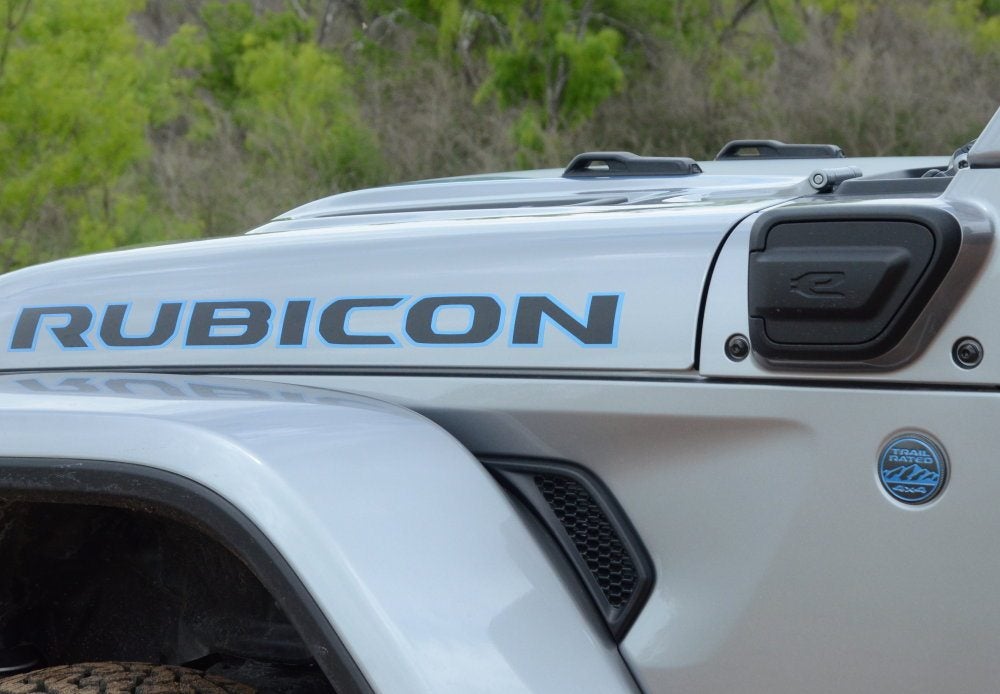
The 2021 Jeep Wrangler 4xe is available in three trim levels – Sahara, Rubicon and High Altitude. Jeep flew me out to Austin, Texas, to spend a day driving a Rubicon 4xe on- and off-road, including some time pulling a small trailer. I logged a few hundred miles and when it was all said and done, the best thing that I can say is that the Wrangler Rubicon 4xe drives a great deal like the non-hybrid version, and that is a very good thing. There are some key differences in how the 4xe drivetrain feels, but once you get used to the unique personality of the 4xe, it is a great package. In fact, for anyone planning to buy a new Jeep Wrangler in the coming months with lots of commuting in the forecast, you absolutely want to opt up to the 4xe.
Hitting the Street
My drive time in the 2021 Jeep Wrangler Rubicon 4xe began in the heart of Austin, Texas. I started with a fully charged battery and my time driving out of the city was done in “Electric” mode. There is also a Hybrid mode and E Save mode, but we will talk about them later. The Electric mode, as you might guess, forces the Wrangler Rubicon to operate as an EV. So long as the battery has proper juice, the gasoline engine rarely kicks in, even at higher speeds. In fact, the first 17 miles of my drive, most of which was in dense city traffic, was traveled without using any gasoline.
The first time that the gasoline engine kicked in was when I was driving up a very steep hill, but as soon as I got to the top of the hill and stopped at an intersection, the gasoline engine shut off and stayed off until the EV battery was depleted. In total, I drove 20.9 miles on all-electric power and that included a few hard pulls to get a feel for how well the electric drive moved the Wrangler Rubicon. Were the driver to make an effort to stretch out the electric range, I believe that the 21-mile official range could be exceeded, but I was driving the Wrangler 4xe too hard to get great electric mileage. That being said, falling just one tenth short of the official number while driving it fairly hard is impressive.
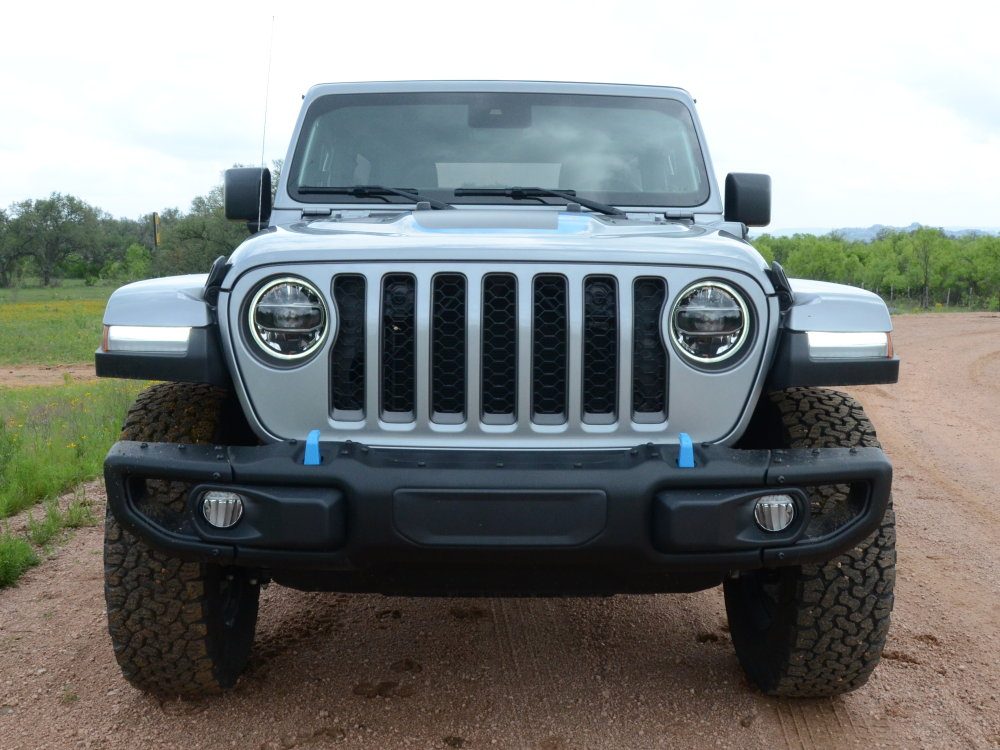
One of the reasons why I probably didn’t get a little better all-electric range was a handful of harder launches from a stop, allowing me to get a great feel for the instant-on torque supply of the electric drive system. Unlike gasoline engines that have to wind up to their peak output, the key advantage to electric drive systems is the instant torque delivery. That makes the Wrangler 4xe very quick from a stop in any mode, with very little delay when you hit the throttle.
It really is a unique experience to drive the Wrangler 4xe in all-electric mode, as it feels like every other Wrangler I have driven in the past decade – and I have driven a bunch of them – except it is completely silent. All you hear around town is the sound of the aggressive Rubicon-spec tires on the pavement and the faint “whirr” of the electric drive.
Entering Hybrid Mode
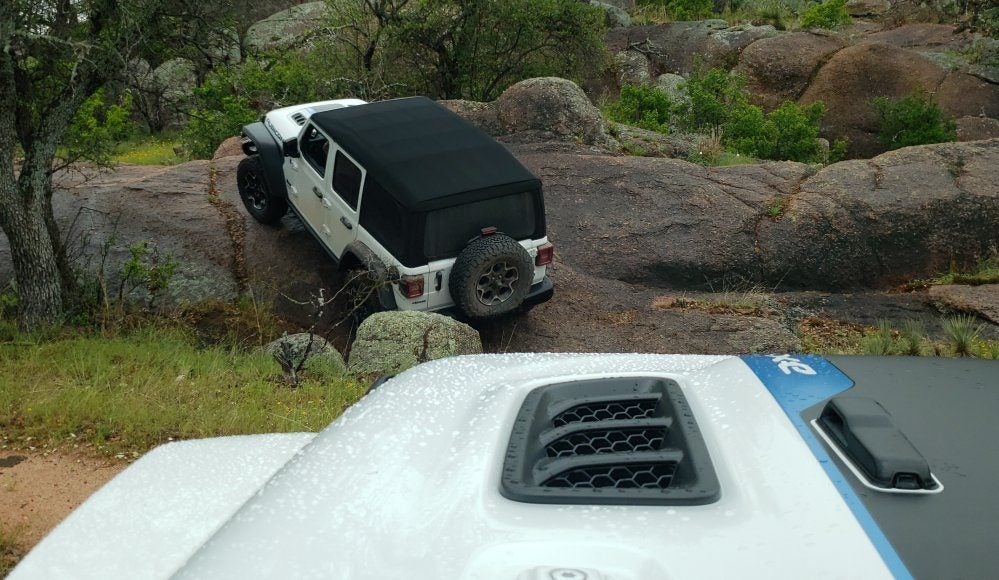
Once the all-electric range hit 0 miles, the Wrangler 4xe switched into Hybrid mode, at which point the gasoline engine provides the majority of the power. The electric drive components do cooperate with the gasoline engine to reach peak power levels, and the gasoline engine often cycles on and off during low speed driving, but in hybrid mode, you get a more traditional driving feel of the combustion engine. Really, once you are in hybrid mode, the 4xe feels like any other new Wrangler Rubicon. While it does occasionally run for short distances in all-electric mode, the engine runs most of the time when you are moving at highway speeds. However, having driven the non-4xe Wrangler with the turbocharged 4-cylinder engine, the extra power of the hybrid package is noticeable under normal driving conditions. The acceleration input of the electric drive leads to stronger early acceleration, even when the gasoline engine is working, but once the turbocharger 2-liter gets wound up, the 4xe accelerates better through the mid-range as well.
Like many vehicles, when you come to a stop with the Wrangler 4xe in Hybrid mode, the gasoline engine shuts off with the automatic start/stop system, but unlike non-hybrid models that have to fire back up before you drive away, the electric drive system allows you to get underway before the engine starts. Once cruising, at points when you are asking for very little throttle input, the gasoline engine shuts off and the electric drive system helps maintain speed, but once you ask for more power, the turbocharged 4-cylinder seamlessly fires up and helps build speed. The system is one of the smoothest that I have tested, so with the radio turned up louder than the engine while cruising on the highway, you may not know when it is running on gasoline without looking at the tachometer.
Max Regen Braking
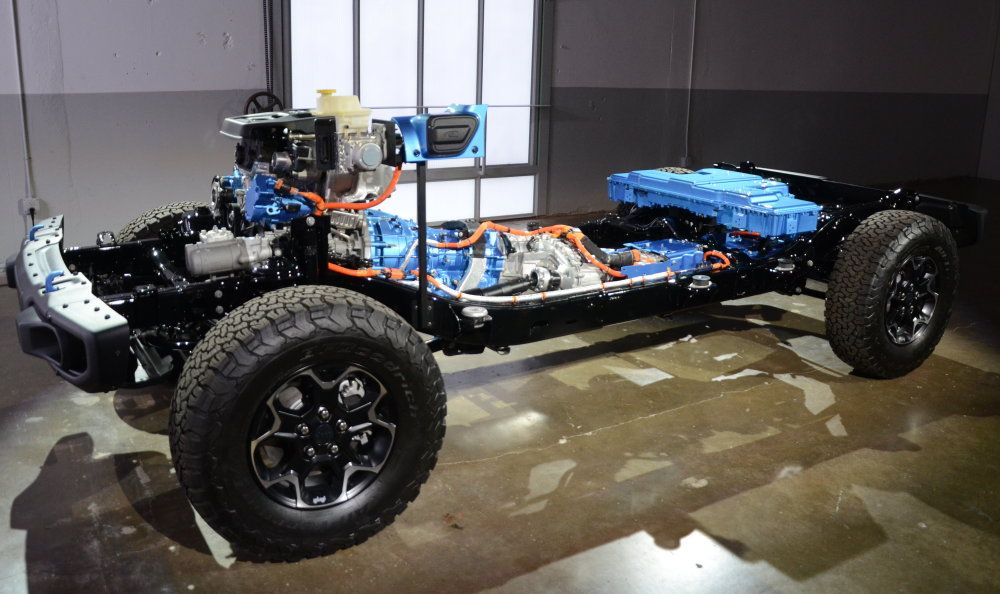
One of the unique features of the Wrangler Rubicon 4xe package is the Max Regen Braking function, which is controlled by a button on the center stack. When this function is engaged, the Wrangler braking system automatically applies drag whenever the throttle pedal isn’t being pushed down. Some automakers call this type of function one-pedal driving, because when you aren’t accelerating, the car is braking on its own, using that braking friction to help charge the drive battery. Unless you have to come to a complete stop or slow down dramatically, you don’t have to go for the brake pedal in many normal driving situations. For example, when cruising along a road where the speed limit is 55, when traffic in front of you begins to slow down for someone turning up in the distance, you don’t need to hit the brakes, you simply need to let off of the throttle and the braking system will apply itself as well as lighting the brake lights.
It is a convenient system, but the automatic braking application has a very unusual feel for someone who hasn’t used something similar before. Most vehicles don’t slow themselves down whenever they aren’t accelerating, but once you are comfortable with how to use the throttle to both speed up and slow down, you will likely leave the Max Regen system turned on all of the time. When you turn it off, the braking system still provides some charging input, but only when you are actively braking. There is no automatic braking application, so if you really don’t like the feel of the system, turning it off leads to a more traditional braking system feel.
All-Electric Off-Roading
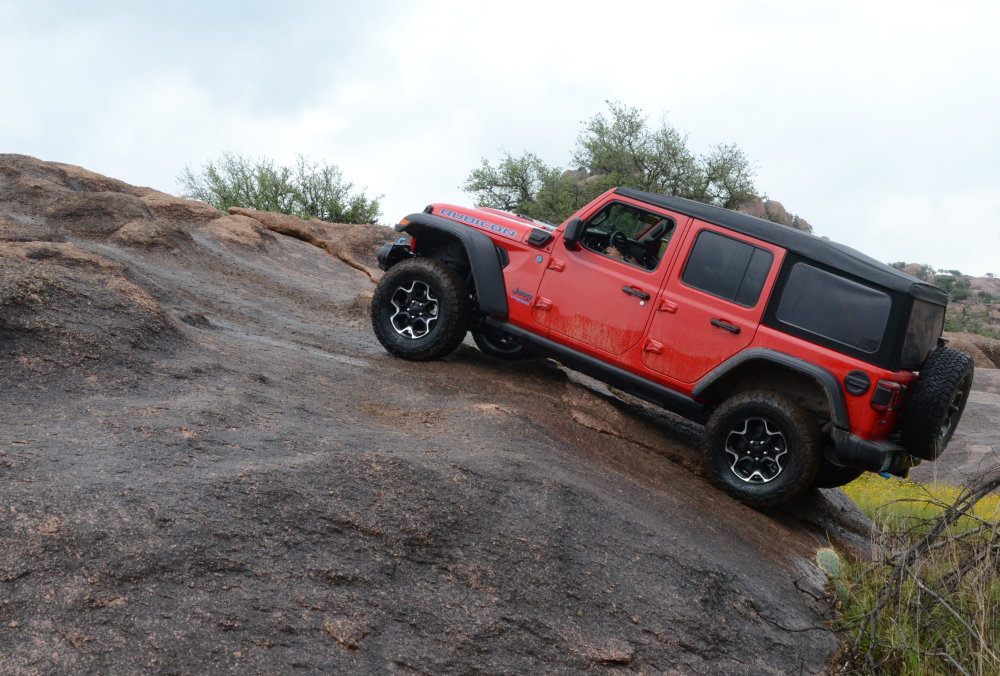
After a couple of hours of driving the Jeep Wrangler Rubicon 4xe on paved roads and some unpaved public roads, we arrived at a ranch where we would be doing some off-roading. Jeep had one of its solar-powered charging stations on-hand to charge Wrangler 4xe batteries when they were not being driven. I parked my Rubicon 4xe for charging while eating lunch and speaking with some of the engineers on hand, allowing the batteries to gain some juice for off-roading fun. As a result, I was able to go through the entire off-road course without using any gasoline, even on the toughest obstacles.
The off-road course started with a drive through a fairly deep drainage trench that tested the Rubicon’s water-fording abilities, followed by some mud-slinging on a lightly worn cow path. It rained all day, so the footing was wet and loose, and without the noise of a gasoline engine, I could hear every little sound created by the tires against the surface. The path that we followed took us over several large rock formations, with the steep, slick granite posing a questionable challenge.
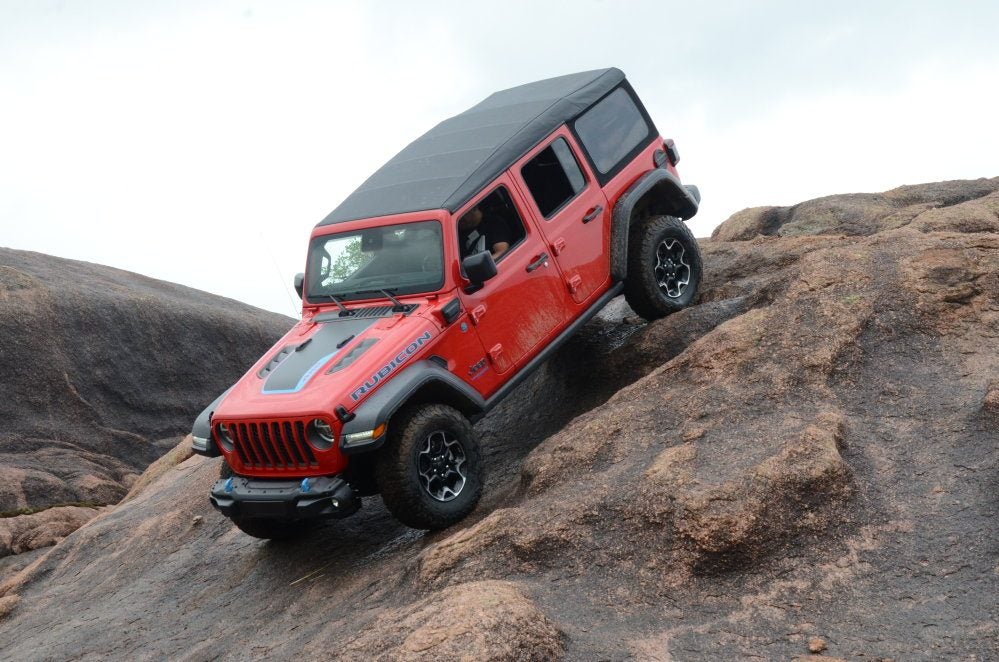
With the Wrangler Rubicon 4xe locked into 4-low, the electric drive system easily climbed up even the steepest rocks. It was during these steep rock climbs when I noticed the most distinct difference of off-roading with all-electric power. I have done some rock crawling with a non-4xe Wrangler Rubicon with the turbocharged 4-cylinder engine in the past and you have to kind of encourage the engine to provide the power to get up steep rocks. On the other hand, as soon as you touch the throttle in Electric mode, the Wrangler 4xe begins to dig in with the beefy Rubicon tires. This responsiveness is great once you get used to it, as steady throttle application with the all-electric drive leads to smoother climbing. You don’t need to feather the throttle to keep the engine in the ideal powerband. You just need to ease into the throttle and stay there, and the 4xe climbs over just about anything that you put in front of it.
Of course, in those models in which the drive battery had been depleted, the Wrangler 4xe performs just as well as any other Rubicon model, but as was the case on the open road, throttle response is much sharper. Driving off-road in Hybrid mode, the 4xe is just as good as the non-4xe models, but the addition of the electric drive components do lead to crisper throttle response when you are playing in the mud or on the rocks.
While at the ranch, I also had a chance to pull a 2,500-pound overland trailer and on the dirt roads, the Wrangler 4xe had no issues pulling that weight. It was hardly noticeable during accelerating or braking.
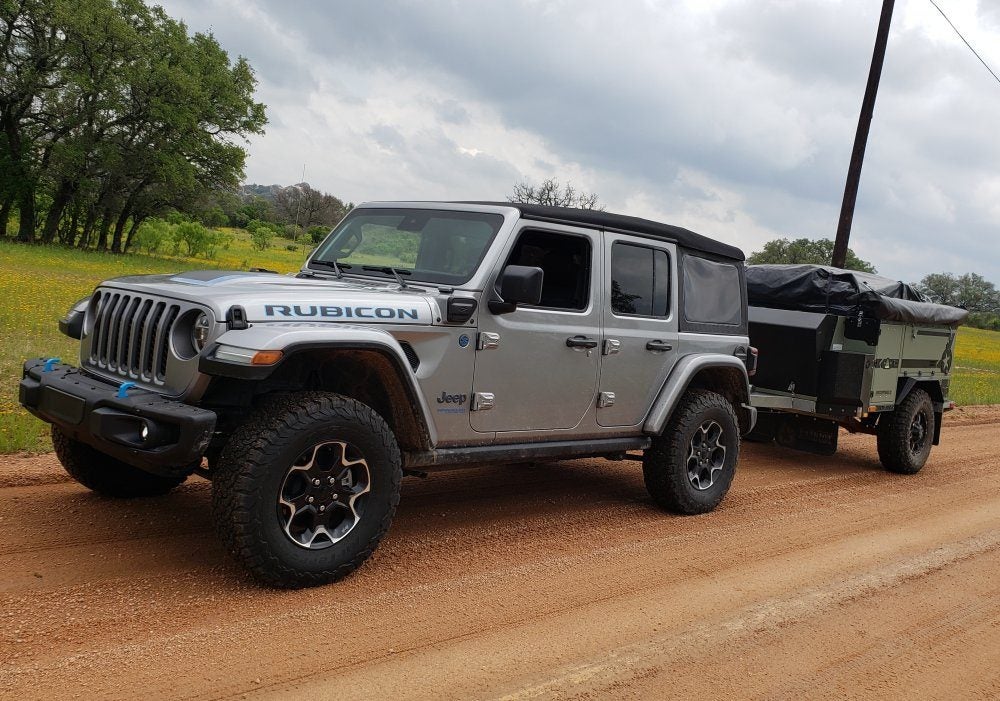
A Great Drivetrain Option
On the Jeep Wrangler Rubicon, the 4xe package adds $6,000 to the bottom line, but buyers should keep in mind that this vehicle applies to federal and state green vehicle tax credits. For example, the $7,500 federal tax credit applies to the Wrangler 4xe, effectively making it less expensive than the non-4xe models with the same basic features.
In short, if you are considering a Jeep Wrangler Unlimited Rubicon with the 4-cylinder engine, you should seriously consider the 4xe upgrade. If you have a short daily commute, you will rarely use gas getting back and forth to work, that all-electric driving comes without any compromise in capabilities or that legendary Jeep feel.
